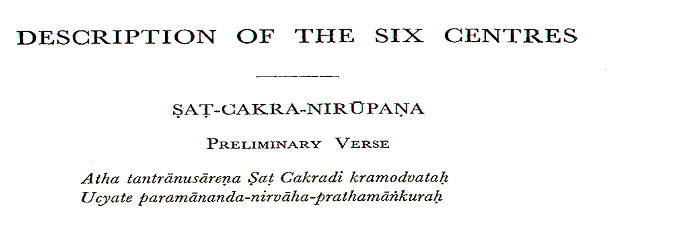
Atha tantrānusāreṇa ṣaṭ chakradi kramodvatah
Ucyate paramānanda-nirvāha-prathamāṅkurah
Now I speak of (the first step) sprouting shoot of the Yoga plant of complete realization of the Brahman, which is to be achieved, according to the Tantras, by means of the six Cakras and so forth in their proper order.
Ucyate ParamAnanda = Says Paramananda. Atha = Now. tantrAnusArena = following the Tantras PrathamAnkurah = First step. nirvAha- = Complete realization Sat Cakradi Kramodvatah = Achieved by means of the six Chakras and other things.
The six Chakras are Muladhara, Svadhisthana, Manipura, Anahata, Vissuddha and Ajna. The accomplished Kundalini Yogi only can explain the principles of Kundalini Yoga. Neither the best of the wise nor the most advanced in age can explain them without the mercy of the Guru. It is full of the greatness of śa, ṣa, Ha ( श ष ह the last three letters of the Sanskrit alphabet). ṣa, Sa, Ha point to Brahma, Vishnu, and Siva.
ParamAnanda is Supreme Bliss and Nityam, Vijananam and Anandam (Eternal, Knowledge, Bliss). Other things refer to Nadis, Lingas, the five elements, Siva Sakti....
Verse 1

Merorbāhyapradeśe śaśi mihirasire savyadakṣe niṣaṇṇe
Madhye nādi suṣuṁnātritaya-guṇamayi candrasūryagnirūpā
Dhattūra-smera-puṣpagrathita-tamavapuḥ kandamadyacchirahstā
Vajrākhyā meḍhradeśā cchirasi parigatā madyameऽsyā jvalanti
In the space outside the Meru, placed on the left and the right, are the two Siras, Sasi and Mihira. The Nadi Susumna, whose substance is the threefold Gunas, is in the middle. She is the form of Moon, Sun, and Fire; Her body, a string of blooming Dhatura flowers, extends to the middle of the Kanda to the Head, and the Vajra inside Her extends, shining, from the Medhra to the Head.
Commentary: Here is the mention of Nadis and Chakras, the knowledge of which is necessary for Kundalini Yoga. Meru is literally a mountain, the central pole of the world; likewise Meru is the vertebral column of the human body. Siras and Sasi are the Moon and the Sun, Ida and Pingala Nadis of the left and right side. Gunas refers to the qualities of the central Susumna Nadi as Sattva, Rajas and Tamas.
bāhyapradeśe = in the space outside. śaśi-mihira-sire = Moon and Sun Nadis = Ida and Pingala nadis. Meru = Meru mountain = spinal column from the Muladhara Chakra to the neck. savyadakṣe niṣaṇṇe = placed on the left and right. Madhye-nādi-suṣuṁnā = the central Nadi or canal = susumna Nadi. Remember these Nadis are subtle and not anatomical. Susumna Nadi extends from Muladhara to Brahma Randhara-the anterior fontanel area. tritaya-guṇamayi = whose substance is the three Gunas or modes: Sattva Rajas and Tamas. There is a central Nadi which has three components, a tube within a tube, three tubes in all: Citrini Nadi is Sattva; Vajra Nadi is Rajas; Susumna Nadi is Tamas. Serpent Power: Page 150 lists Susumna Nadi, Vajrini Nadi, Citrini Nadi and the central Brahma Nadi or canal. candrasūryagnirūpā = Moon-Sun-Fire form. Citrini Nadi is pale and of the form of Moon. Vajrini is of the form of Sun. Susumna is fiery red like Fire. kandamadyacchirahstā = Kanda-MadhyAt-SirahsthA = from the middle of the Kanda to the head. Kanda means bulbous root, present in the Uro-genital Triangle in man, the point being two fingers above the anus and two fingers below the root of the phallus (medhra). 72K Nadis emerge from the Kanda, of which only three are the most important: Ida, Pingala, and Susumna. Susumna goes to the neck, emerges from the spine, goes to the forehead, passes between the eyebrows united with Kundali, goes near the Brahma Randhra and ends near the 12-petalled lotus. Susumna clings on to the stalk of Sankhini as it goes up the spinal cord. Sankhini is a Nadi that starts at Kanda, reaches the throat, divides into two branches, one branch going to the left ear and the other goes to the crown. madyameऽsyā = Vajrah inside her = Inside Susumna Nadi.Verse 2

Tanmadhye citriņī sā praṇavavilāsitā yoginām yogagamyā
Lūtātantūpameyā sakalasarasijān merumadhyāntarasthān
Bhittva dedipyate tad-grathana-racanayā śuddha-bodha-svarūpā
Tanamadhye brahmanāḍī harakukha-kuharadādi-devāntarātmā.
Inside her is Citrini, who is lustrous with the lustre of the Pranava and attainable in Yoga by Yogis. She (Citrini) is subtle as a spider's thread, and pierces all the Lotuses which are placed within the backbone, and is pure intelligence. She (Citrini) is beautiful by reason of these (Lotuses) which are strung on her. Inside her (Citrini) is the Brahmanadi, which extends from the orifice of the month of Hara to the place beyond, where Adi-deva is.
Tanmadhye = Inside Her (Vajra). praṇavavilāsitā = lustrous within the luster of Pranava (om). She absorbs the luminosity from Pranava in Ajna Chakra as she passes through it. Lūtātantūpameyā = like a spider's thread. She is fine like a spider's thread. sakalasarasijān merumadhyāntarasthān Bhittva dedipyate = She pierces all the lotuses. Tanamadhye = inside Her. Within Citrini is Brahma Nadi, through which Kundalini goes from Muladhara to Parama Siva. Kundalini is of the from of Sabda Brahman. harakukha-kuhara = The orifice of mouth of Hara. It is the orifice at the top of the Svayambhu Linga in Muladhara. Adi Deva is the Supreme Bindu in the pericarp of the 1000-petalled lotus.
Susumna = Su + Sumna = Excellent + musical hymn, happiness or joy = perfect harmony. All these important Nadis are called Susumna. Essentially Susumna consists of the substance of the spinal cord with the three Nadis inside it, placed one tube inside the other. There is the central Nadi (Brahma Nadi), middle Nadi is Chitra Nadi (AKA Citrini) and the outer Nadi (Vajra Nadi). Kundalini passes through the Central Brahma Nadi. Remember these are subtle channels, canals or Nadis and not anatomical entities. Chitra Nadi = Citrini = The Nadi is anthropomorphized and deified.
See the Diagram below
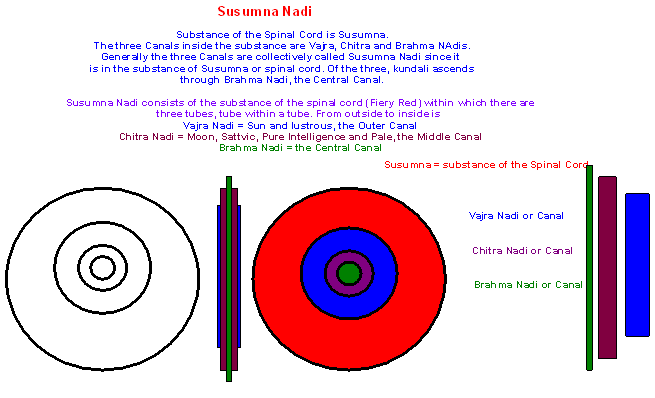
Verse 3
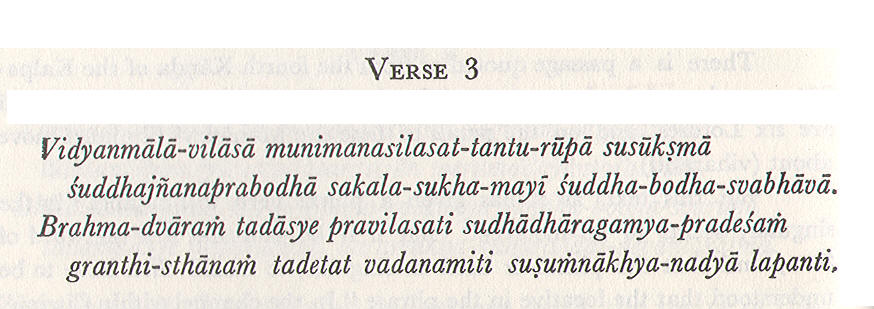
Vidyanmālā-vilāsā manimanasilasat-tantu-rūpa susūkṣmā
śuddhajṅanaprabhodhā sakala-sukha-mayī śuddha-bodha-svabhāvā
Brahma-dvāraṁ tadāsye pravilasati sudhādhāragamya-pradeśaṁ
Granthi-sthānaṁ tadetat vadanamiti suṣuṁnākhya-nadyā lapanti.
She1 is beautiful like a chain of lightning and fine like a (lotus) fibre, and shines in the minds of sages. She is extremely subtle; the awakener of pure knowledge; the embodiment of all Bliss, whose true nature is pure Consciousness. The Brahma-dvara shines in her mouth. This place in the entrance to the region sprinkled by ambrosia, and is called the Knot, as also the mouth of Susumna.
She1 = Citrini who ascends through Brahma Nadi, the innermost tube of Susumna Nadi. Also known as Chitra Nadi.
lasat-tantu-rūpa = Fine like a (lotus) fiber and shines (because of the presence of Kundalini). sakala-sukha-mayī = Sukha is Ananda or Spiritual Bliss. She is the source of all Bliss. Sukha = (literal meaning) pleasant, gentle, agreeable. śuddha1-bodha2-svabhāvā3 = Whose true nature is Pure Consciousness. Literal meaning = Pure1 Consciousness2 by natural constitution3. Brahma-dvāraṁ = Brahma's opening, gate, entrance or exit for Kundalini and Her ascent to Siva or descent from Siva. tadāsye = her mouth. the mouth of Brahma Nadi. tadetat = the place near the entrance. sudhā1dhāra2gamya3-pradeśaṁ4 = literal meaning = Pure-containing- union of [Parma-Siva and Sakti]-place = The place that contains Ambrosia (Suddha) which comes from the union of Siva and Sakti. Here the union (StrIpum-yogAt = woman-man union) is symbolic. Granthi-sthānaṁ = Knot-place = the place where there is a knot at the root of all Nadis.
sva-bhāvā: Kalicarana says it means one's nature. Sankara says it means Jnana which is Paramatma or divine or spiritual Jnana. Sankara reads śuddha-bodha-svabhāvā as śuddha-bhāvā-svabhāvā.
Verse 4
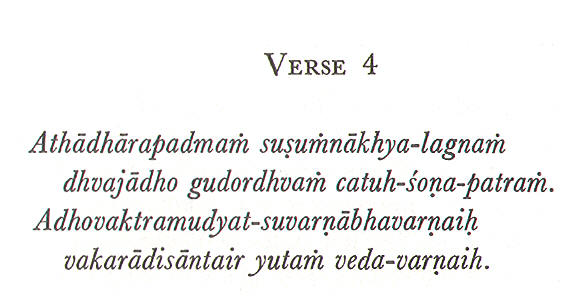
Athādhārapadmaṁ suṣuṁnākhya-lagnaṁ
Dhvajādho gudordhvaṁ catuh-śoṇa-patraṁ.
Adhovaktramudyat-suvarṇābhavrṇaih
Vakarādisāntair yutaṁ veda-varṇaih.
Next we come to the Adhara Lotus1. It is attached to the mouth of the Susumna, and is placed below the genitals and above the anus. It has four petals of crimson hue. Its head (mouth) hangs downwards. On its petals are the four letters from Va to Sa, of the shining colour of gold.
From Verses 4 to 13, Paramanand describes the Muladhara Chakra. Adhara Lotus1 = Support-Lotus = Muladhara Chakra Lotus at the base of the spine in the Uro-genital triangle.
suṣuṁnākhya-lagnaṁ = It is attached to the mouth of Susumna. Four Petals of the Muladhara Chakra are present at the junction of Kanda and Susumna. Dhvajādho gudordhvaṁ = from below the root of the genitals to Susumna. catuh-śoṇa-patraṁ. = four red petals. Red or crimpson. Vakarādisāntair yutaṁ veda-varṇaih. = The four letters are Va, śa (palatal), ṣ (cerebral), and Sa. Vedavarna = Veda character = means four Vedas. The letters on the petals are to be meditated upon in a clockwise fashion. Here Veda stands to mean four.
The letters of the alphabet on each of the petals of the six lotuses are to be meditated upon going round a circle from the right (Dakṣināvartena: Clock-wise direction).
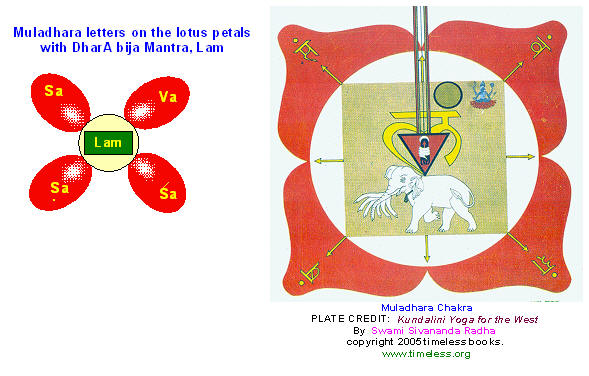

Verse 5
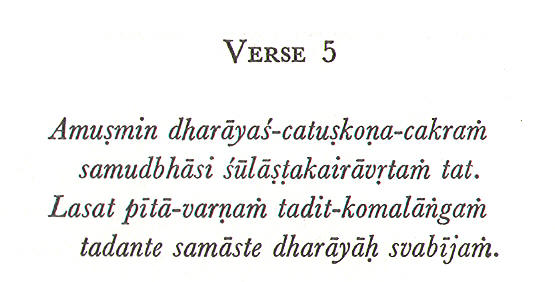
Amuṣmin dharāyaś-catuṣkoṇa-cakraṁ
Samudbhāsi śūlāṣṭakairāvṛtaṁ tat.
Lasat pītā-varṇaṁ tadit-komalāngaṁ
Tadante samāste dharāyāḥ svabījaṁ
In this (Lotus) is the square region (Cakra) of Prthivi, surrounded by eight shining spears. It is of a shining yellow colour and beautiful like lightening, as is also the Bija of Dhara which is within.
Parts of the translation are not by Woodroffe.
Amuṣmin dharāyaś-catuṣkoṇa-cakraṁ = In this (Lotus), Earth's four-angle Chakra. dharāyāḥ svabījaṁ: Bija of Dhara: it is the Root mantra of Earth, Lam. Prithvi is Earth, which is a Tattva, principle or building block of the world. śūlāṣṭa = Asta + Sula = 8 spears. Eight spears meaning eight directions or points of compass. Lasat pītā-varṇaṁ tadit-komalāngaṁ = shining yellow color, beautiful like a lightning, having a tender body. Tadante samāste dharāyāḥ svabījaṁ= within it seated Bija of Dhara: it is the Root Mantra of Earth, Lam. Prithvi is Earth, which is a Tattva, principle or building block of the world. Tad-ante = inside the region of Prithvi (Dhara Mandala), which is the Bija of Earth: Lam. This Bija is of shining yellow color (Lasat-pIta-varnam = shining yellow color). lam is Aindra-BIja (Bija of Indra) of yellow color possessed of four arms, holding the thunder in one hand, mighty and seated on the elephant Airavata.
The Kundalini Chakras from Sahasrara to Muladhara centers are the home for the building blocks of the human body. Ajna Chakra is the home for the mind, Vishuddha for Ether, Anahata for air, Manipura for fire, Svadhistana for water and Muladhara for earth. All the elements are assigned a shape and color: Earth is yellow and square; Water is translucent and crescent-shaped; Fire is red and triangular; Air is blue and circular; Ether is smoky and oval.
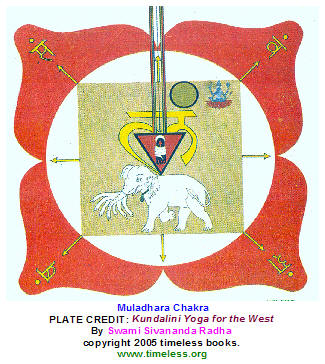

In the pericarp of the lotus is present the square Earth. Earth is round but its representation here is a square and of yellow color. The four angles and four side have the eight spears (see the arrows). The tips of the spears are shaped like the breast of a woman or the mountain. Remember the name of Wyoming's majestic mountains, 'Grand Tetons' of Grand Teton National park. Woodroffe quotes Nirvana Tantra by saying that the eight spears are like the seven Kula Mountains: Nilacala, Mandara, Chandr Sekhara, Himalaya, Suvela, Malaya, and Suparvata. The spears are those of Deity Dakkini, one of the Bhairavis (Consort of Bhava--Siva) BHAIRAVI
The Bija Mantra (Lam) is right in the middle of the square earth. It is of yellow color. It is the Bija of Indra (the god of thunder and lightning of the Indo-Aryans) who holds the thunderbolt in one hand sitting on the elephant Airavata. The Bija of Earth and of Indra are the same. It is said that Indra has mighty arms; the tips of his fingers reach the knees. Indra is the chief of gods and his physiognomy and body habitus are different from human beings. Long hands reaching the knee in an earth-bound person are characteristic of Marfan's syndrome. http://en.wikipedia.org/wiki/Marfan%27s_syndrome President Lincoln had Marfan syndrome and I doubt, is an incarnation of the Thunder and Lightning God Indra of Indo-Aryans.
Indra is MAhA-bAhu, possessed of great long arms--sign of prowess. AjAnu-lambita-bAhu = Arms reaching the knees. The elephant of Indra in the Chakra denote qualities of Tattva and the vehicles of the devata therein. The Chakra is inhabited by DAkinI, one of the great BhairavIs.
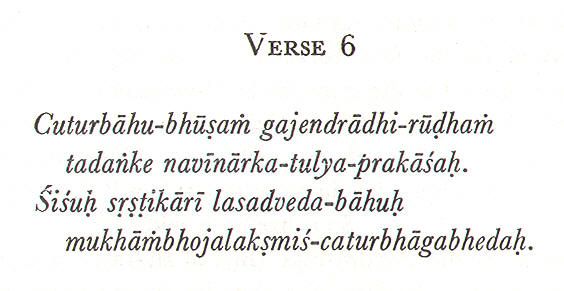
Cuturbāhu-bhūṣaṁ gajendrādhi-rūḍhaṁ
tadaṅke navīnārka-tulya-prakāśaḥ.
śiśuḥ sṛṣṭkārī lasadveda-bāhuḥ
mukhāṁbhojalakṣmiś-caturbhāgabhedaḥ.
Ornamented with four arms and mounted on the King of Elephants, He carries on his lap the child Creator, resplendent like the young Sun, who has four lustrous arms, and the wealth of whose lotus-face is four-fold.
Cuturbāhu-bhūṣaṁ gajendrādhi-rūḍhaṁ = Ornamented with four arms and mounted on the king of elephants. tadaṅke navīnārka-tulya-prakāśaḥ. = on his lap (of Dhara Bija) resplendant like the young sun. śiśuḥ sṛṣṭkārī = the child creator = Brahma. lasad-veda-bāhuḥ = glowing four arms. Veda = Vedas or four (as in four Vedas). mukhāṁbhojalakṣmiś-caturbhāgabhedaḥ. = The bounty of whose lotus-face is fourfold. By this is meant the four-faced Brahma. here some replace Bhedah with Veda meaning that Vedas emanated from the four lotus-faces of Brahma.
Dhara Bija (Earth Bija Mantra) is in Muladhara and Creator Brahma dwells in its Bindu which is above Nada. The king of Immortals, Indra, is seated on the elephant.
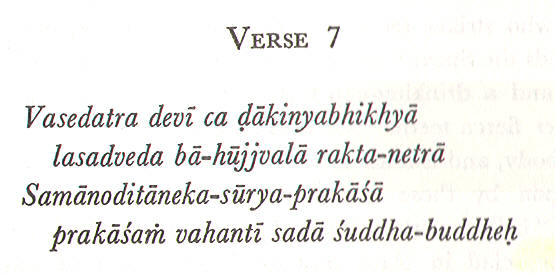
Vasedatra devī ca ḍākinyabhikhyā
lasadeva bā-hūjjvalā rakta-netrā
Samānoditāneka-sūrya-prakāśā
prakāśaṁ vahantī sadā śuddha-buddheḥ
Here dwells the Devi Dakini by name; her four arms shine with beauty, and her eyes are brilliant red. She is resplendent like the lustre of many Suns rising at one and the same time. She is the carrier of the revelation of the ever-pure Intelligence.
Vasedatra devī ca ḍākinyabhikhyā lasadeva bā-hūjjvalā rakta-netrā = Here dwells the Devi Dakini by name; her four arms shine with beauty, and her eyes are brilliant red. Samānoditāneka-sūrya-prakāśā = resplendent like the lustre of many Suns rising at one and the same time. prakāśaṁ vahantī sadā śuddha-buddheḥ = She is the carrier of the revelation of the ever-pure Intelligence.
Dakini Sakti, the presiding deity, is in Adhara or Muladhara Chakra and enables the Yogi to acquire knowledge of the Tattva (Tattva Jnana). Dakini is the queen of Muladhara Chakra and also the door keeper. Dakini, Rakini, Kakini, Lakini, Sakini and Hakini (all named after the initial Sanskrit letters, Da, Ra etc) are the queens of the respective Chakras.
Meditation of Dakini is as follows: Meditate on her, the red, the red-eyed Dakini, in the Muladhara, who strikes terror in the hearts of Pasus, who holds in her two right hands the spear and the khatvanga and in her two left hands the sword and a drinking-cup filled with wine. She is of fierce temper and shows her fierce teeth. She crushes the whole host of enemies. She is plump of body, and is fond of Payasanna. It is thus that she should be meditated upon by those who desire immortality.
She has Tilaka, forehead mark of vermilion, and eyes ornamented with collyrium, is clad in black antelope skin and decked with varied jewels.
khatvanga = A staff with human skull at the upper end. Pasus = The unillumined ones. sword = used in sacrifice of animals. Payasanna = a kind of milk pudding with boiled milk, rice, butter, sugar, raisins, saffron. Tilaka is the red vermilion mark worn on the forehead to indicate their life with a living husband.
The lotus is turned up in the path of renunciation (Nivrrti Marga) and return to Para Brahman and turned down in life of action (Pravrrti Marga), as said by Siva to Parvati.
We as earthlings are on the Pravrrti Marga, the path of Evolution, a path away from the Supreme Consciousness. We are afflicted with impurities (mummalam: three impurities, Anava, Maya and Kanma Malams. more on them at: Primer in Saiva Siddhanta. Those on Nivrrti Marga are making the centripetal journey towards the Supreme Consciousness and merge with Him. The are devoid of impurities.

Vajrākhyā viaktradeśe vlasati satataṁ karṇikā-madhyasaṁsṭhaṁ
koṇaṁ tat traipurākhyaṁ taḍidiva vilasat-komalaṁ kāmarūpam
kandarpo nāma vayur nivasati satataṁ tasya madhye samantāt
jīveśo bandhu-jīva-prakaramabhί-hasan koṭisūrya-prakāśaḥ
Near the mouth of the Nadi called Vajra, and in the pericap (of the Adhara Lotus), there constantly shines the beautifully luminous and soft, lightening-like triangle which is Karmarupa, and known as Traipura. There is always and everywhere the Vayu called Kandarpa, who is of a deeper red than the Bandhujiva flower, and is the Lord of Beings and resplendent like ten million suns.
The Triangle of Mulachakra in the pericarp is described. The triangle according to Visvanatha and Gautamiya Tantra is Iccha-Jnana-Kriyatmaka (the powers of the Will, Knowledge, and Action). The Triangle is the charming Sakti Pitha, above DharA-Bija. The three lines are VAmA, JyestA and Raudri. TANTRA7.gif shows the triangle under the verse 37.
Vajrākhyā viaktradeśe = near the mouth of the Nadi called Vajra. koṇaṁ tat traipurākhyaṁ = Triangle is so called because of the presence of Devi Traipura within the Ka inside the Triangle, the latter ka is the chief letter of KAma Bija. Tantraraja Siva says to Devi, 'the letter Ka is thy form.' Thus Kam is the Bija of KAmini adn Klim is the Mantra. Go to TANTRA to see the Triangle.
This Muladhara Triangle is the Sthula (gross) aspect of Suksma (subtle) Kamaraja Triangle in Sahasrara Chakra.
komala = soft = oily and smooth. kāmarūpam = that by which KAma is caused to be felt. It is the embodiment of the devotee's desire. It is MadanAgArAtmaka meaning Chamber of Madana (Deva of Love)--the Yoni. kandarpa = This is the Kandarpa-Vayu in the Triangle. jīveśa = Lord of Beings. Continuation of Life is dependent on kAma or Kandarpa-Vayu. Vayu = air. PrAna dwells in the heart; ApAna in the anus; Kandarpa-VAyu is part of the ApAna-VAyu. ApAna and PrAna draw each other, thus preventing each other from leaving the body. When they are in accord, they leave the body. Kandarpa, being part of ApAna is the Lord of Life and prevents the PrAna from leaving the body. PrAna and ApAna are the maintainers of animate being. koṭisūrya-prakāśaḥ = resplendent like ten million suns. Go to BG04 for description of Airs or Vayus.
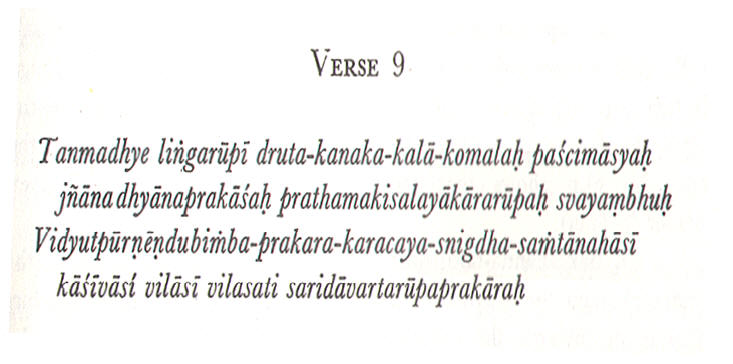
Tanmadhye lingarūpī druta-kanaka-kalā-komalaḥ paścimāsyah
Jñāna dhyānaprakāsaḥ prathamakisalayākārarūpaḥ svayṃbhuḥ
Vidyupūrṇēṇdubimba-prakara-karacaya-snigdha-saṁtānahāsī
Kāsīvāsī vilāsī vilasati saridāvartarūpaprakāraḥ
Inside it (the triangle) is Svayambhhu in His Linga-form, beautiful like molten gold, with His head downwards. He is revealed by Knowledge and Meditation, and is of the shape and colour of a new leaf. As the cool rays of lightening and of the full moon charm, so does His beauty. The Deva who resides happily here as in Kasi is in forms like a whirlpool.
Svayambhhu = Self-originated, Self-existent. Siva-Linga's other name. Svayambhu is both Parabrahman and SabdaBrahman meaning by Jnana we realize His attributelessness (Brahman) and by DhyAna the attributefulness (Isvara).
There are two kinds of Brahmans: ParamBrahman and SabdaBrahman (Supreme Brahman with no attributes and Sound Brahman who is the creator of the universe. Parabrahman gives rise to Sabda or Soundbrahman (Bindu, Kundalini) which is the origin of sounds, alphabets, syllables, words, prose, poetry and the universe of beings and matter. By Spiritual Knowledge we apprehend Parabrahman and by meditation the Sabdabrahman or Isvara. Simply put, we all originated from thought, sound and word of Sabdabrahman or God (logos).
Tanmadhye lingarūpī svayṃbhu = Inside it (the triangle) is Svayambhhu in His Linga-form. druta-kanaka-kalā-komalaḥ = His body has the soft luster of molten gold. paścimāsyah = His head downwards. The ever-blissful Svayambhu being inactive has his head down, ready to be moved by KAma-Bija. Jñāna- dhyāna-prakāsaḥ = Revealed by Knowledge and Meditation. prathama-kisalayā-kāra-rūpaḥ = The shape and color of new leaves. This refers to the Svayambhu Linga like the tapering shape of the new unopened leaf-bud. (He is beautiful and blue-green Siva --Sivam-SyAmala-Sundaram. Vidyut-pūrṇēṇdu-bimba-prakara-karacaya-snigdha-saṁtāna-hāsī = As the cool rays of lightning and of the full moon charm, so does His beauty. Kāsīvāsī vilāsī = The Deva who resides happily here as in KAsi. sarid-āvarta-rūpa-prakāraḥ = Like a whirlpool (Whirlpool is the depression on the top of the Linga.
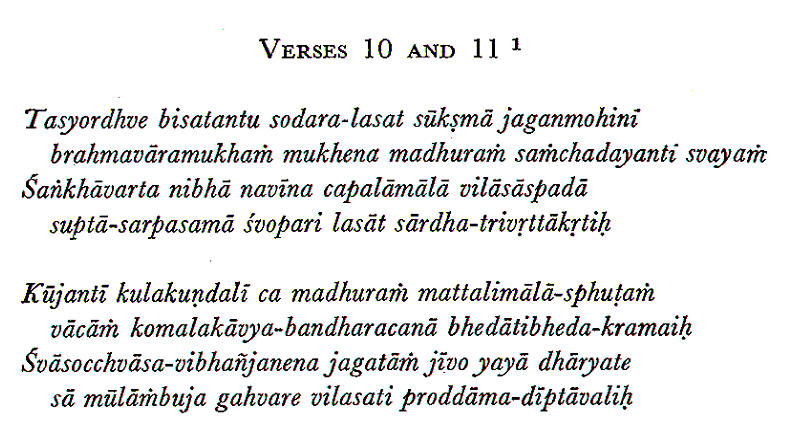
10. Tasyordhve bisatantu sodara-lasat sūkṣmā jaganmohini
brahmavāramukhaṁ mukhena madhuraṁ saṁchadayanti svayaṁ
śakāvarta nibhā navīna capalāmālā vilāsāspadā
suptā-sarpasaṁā śvopari lasāt sārdha-trivṛttākṛtiḥ
11. Kūjantī kulakuņdalī ca madhuraṁ mattalimālā-sphuṭaṁ
vācāṁ komalakāvya-bandaracanā bhdātibheda-kramaiḥ
śvāsocchvāsa-vibhañjanena jagatāṁ jīvo yayā dhāryate
sā mūlāmbuja gahvare vilasati proddāma-dīptāvaliḥ
Over it shines the sleeping Kundalini, fine as the fibre of the lotus-stalk. She is the world-bewilderer, gently covering the mouth of Brahma-dvara by Her own. Like the spiral of the conch-shell, Her shining snake-like form goes three and a half times round Siva, and Her lustre is as that of a strong flash of young strong lightning. Her sweet murmur is like the indistinct hum of swarms of love-mad bees. She produces melodious poetry and Bandha and all other compositions in prose or verse in sequence or otherwise in Samskrta, Prakrta and other languages. It is she who maintains all beings of the world by means of inspiration and expiration, and shines in the cavity of the root (Mula) Lotus like a chain of brilliant lights.
Purport: Kundlini Sakti is in the Svayambhu-Linga. Devi-Kundalini maintains the existence of individual beings (Jiva and Jivatma) by functions of inspiration and expiration. She makes the sound of humming bees and is the source of speech. She dwells in the triangular hollow in the pericarp of the Muladhara Lotus resting on the svayambhu-Linga. Over it shines the sleeping Kundalini and Her shining snake-like form goes three and a half times round Siva = She as the snake wraps around the Linga three and half times and over it with Her head. world-bewilderer = Siva says, "This Supreme Sakti is in me, and is Brahman Itself. This MAyA is dear to Me, by which this world is bewildered." Her sweet murmur is like the indistinct hum of swarms of love-mad bees = When She is awakened She makes this sound. This indicates, according to Sankara, the Vaikhari state of Sound (Articulated sound). Go to Sabda or Sound for full description of Sound. melodious poetry and Bandha = The composition of the verse (s) is arranged to look alike a diagram or picture, example: A lotus (padma-Bandha), a horse (Asva-Bandha), Pictorial appearance of the verse. inspiration and expiration, = It is said that man makes 21600 cycles of inspiration and expiration. Without Her, there is no breathing.
10. Tasyordhve bisatantu sodara-lasat sūkṣmā jaganmohini ---Verse 10 line 1
brahmavāramukhaṁ mukhena madhuraṁ saṁchadayanti svayaṁ ---Verse 10 line 2
śakāvarta nibhā navīna capalāmālā vilāsāspadā ---Verse 10 line 3
suptā-sarpasaṁā śvopari lasāt sārdha-trivṛttākṛtiḥ ---Verse 10 line 4
vācāṁ komalakāvya-bandaracanā bhdātibheda-kramaiḥ Verse 11 line 2
bisatantu sodara-lasat sūkṣmā = Shines fine as the fibers of the lotus stalk. jaganmohini = World-bewilderer. madhuraṁ = Sweet. She drinks the nectar coming by the sweet Brahma-dvara. navīna- capalā-mālā vilāsāspadā = A strong flash of young lightning. Lit., 'possessed of the wealth of a strong flash of young lightning.' komala-kāvya-banda-racanā-bhdātibheda-krama = She produces melodious poetry.
Devi Kundalini is Srsti-rupa meaning she is of the form of Creation itself. She is Srsti-Stithi-layatmika meaning She is Creation, Existence and Dissolution. She is VisvAtitA meaning She is beyond the universe; She is Immanent and trascends the universe. She is Jnana-Rupa meaning She is of the form of Consciousness. She is Urddhva-VAhini meaning She goes upwards from Muladhara to Sahasrara Chakras. She is Ista-Deva-SvarUpini, meaning that She is meditated upon as The Particular Devata. "She is a damsel of sixteen in the full bloom of Her first youth, with very large and beautifully formed breasts, decked with all the varied kinds of jewels, lustrous as the full moon, red in color, with restless eyes." Kundalini is always meditated upon as red (RaktA) in color. She is SyAma, a woman who is warm in winter and cool in summer and lustrous like the molten gold. Before she pierces the Chakras, She, the Brahman Itself, is resplendent like million of moons rising at the same time and has four arms and three eyes. Her hands make the Vara and Abhaya Mudras (Granting Boons and Fear-Not Pose of hands), and hold a book and a Vina--musical instrument. She sits on a lion and as She passes to Her own abode (Muladhara Chakra) the Awe-inspiring One assumes different forms.
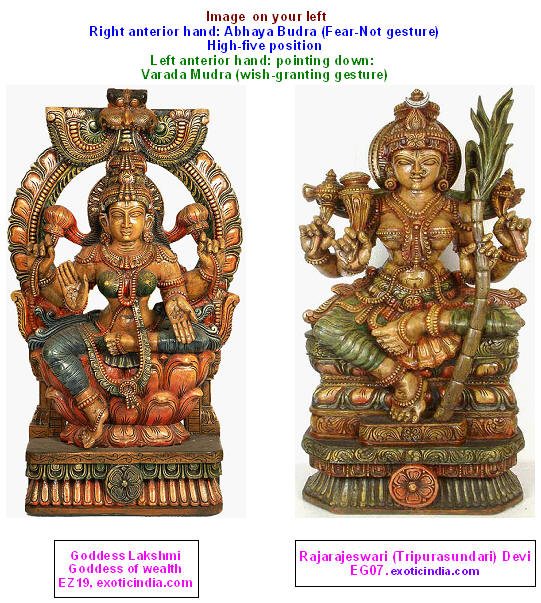
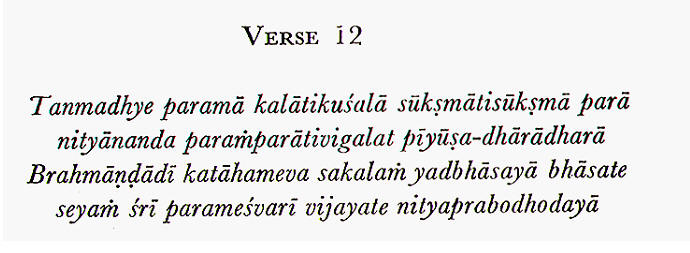
Tanmadhye paramā kalātikuśalā sūkṣmātisūkṣmā parā
Nityānada paraṁparātivigalat pīyūṣa-dhārādharā
Brahmāņḍādī katāhameva sakalaṁ yadbhāsayā bhāsate
seyaṁ śrī parameśvarī vijayate nityaprabhodhodayā
Within it reigns dominant Para, the Sri-Paramesvari, the Awakener of eternal knowledge. She is the Omnipotent Kala who is wonderfully skilful to create, and is subtler than the subtlest. She is the receptacle of that continuous stream of ambrosia which flows from the Eternal Bliss. By Her radiance it is that the whole of this Universe and this Cauldron is illumined.
Within it = Within Svayambhu-Linga. Para = AKA: Kundalini, Brahmani. In Kundalini is the ParA state of Sabda or sound.
Verse: KalA: Cit-KalA is Devi who is Consciousness-Brahman and its part or fragment is resident in the mind of humans; human consciousness is derived from Cit-KalA; so She is Cit-KalA. It is the Brahman-Consciousness, a fragment of which is incorporated in the human mind, which cannot function without Cit-KalA. In Bhagavad-Gita Bhagavan says: 15.7: A fragment of My own Self becomes the eternal living soul in this world of Jivatmas and draws the senses of material nature (Prakrti), of which the mind is the sixth. Cit-kalA unites with Lakshmi and appears as a tapering flame. To relinquish all sins, meditate upon Kundalini within, above, below the flame as Brahma, Siva, SUra (Sun) and Paramesvara; Vishnu, Prana, KAlAgni (The destructive Fire at Dissolution) and Chandra (moon). atikuśalā = She is wonderfully skilful to create. Nityānada paraṁparātivigalat pīyūṣa-dhārādharā = She is the receptacle of that continuous stream of Ambrosia flowing from Eternal Bliss (Brahman). Nityananda = Eternal Bliss = Nirguna Brahman = Attributeless Brahman = Unqualified Brahman. Parampara = linear descent (connected step by step) as follows: Nirguna-Brahman→ Saguna-Brahman→ Sakti → NAda → Bindu → Kundalini. Cit-KalA is another form of Kundalini. The Ambrosia trickles down step by step to Paramesvari AKA CitkalA, who is Nityananda-Parampara, a descendant of the original Nirguna-Brahman. Another way of looking at this flow of Ambrosia. From Nityananda, this nectar comes down to Para-Bindu, passes through Ajna Chakra, Visuddhar Chakra, Anahata, Manipura, Svadhistana, and reaches Muladhara. ativigalat pīyūṣa-dhārādharā = She is the receptacle of the stream of Ambrosia which flows copiously from Nityananda.
Cauldron = Cauldron shape of the lower half of Brahmanda (Brahma's egg =Universe).
Swami Paramananda talks about the Staff-like Para-Sakti, who is like a straight thread above Kundalini, who is coiled round Svayambhu-Ling. Sri-Paramesvari, whose radiance illumines this Universe and its cauldron, dwells in the Svayambhu-Linga above where Kundalini is coiled and holds supreme sway.
paramā = Omnipotent. She is Supreme MAyA. kalā = is a form of NAda-Sakti.

Dhyātvaitan-mūlacakrāntaravivaralasatkoṭisūryaprakāśāṁ
Vācāmēśo narendrah sa bhavati sahasā sarvavidyāvinodī
Ārogyaṁ tasya nityaṁ niravadhi ca mahānandaittāntarātmā
Vākyaiḥ kāvyaprabandhaiḥ sakalasuragurūn sevate śuddhaśilaḥ.
By meditating thus on Her who shines within the Mula-Cakra, with the lustre of ten million Suns, a man becomes Lord of speech and King among men, and an Adept in all kinds of learning. He becomes ever free from all diseases, and his inmost Spirit becomes full of great gladness. Pure of disposition by his deep and musical words, he serves the foremost of the Devas.
Mula-Cakra = Root Chakra = Muladhara Chakra.
mūla-cakra antara-vivara-lasat-koṭisūrya-prakāśāṁ = She shines in the Muladhara Chakra like ten million suns shining at one and the same time. Vākyaiḥ kāvya-prabandhaiḥ = His deep and musical words. sevate = He serves. He uses his words in hymns of praise and for purpose of a like nature. He pleases them by words of adoration. sakala-sura-gurūn = all-devas-guru-like excellence. All the foremost of the Deities. Sura-Gurun refers to Brahma, Vishnu, and Siva, the Trinity of Hinduism. GurUn like Simha (lion), SArdUla (Tiger), NAga (serpent) are appended to male names to imply excellence. Example: He is lion of a man.
Summary: Muladhara is a Lotus of four red petals having on them gold letters Va, Śa, Ṣa, Sa. In the Pericarp is the DharA-mandala with eight spears and in the lower part is the DharA-Bija (Lam) who has four arms and is seated on the elephant Airavata. He is yellow, and holds Vajra (thunderbolt) in his hands. Inside the Bindu of DharA-Bija is the four-faced child Brahma, who is red in color, and has four hands with Danda (staff), Kamandalu (gourd), Rudraksa rosary and Abhaya-Mudra (Fear-not pose). In the pericarp besides Brahma there is a red lotus on which is seated red-colored, four-armed Sakti DAkini, the presiding deity of the Chakra (ChakrAdhisthAtrI), holding SUla (spear), KhatvAnga (skull-mounted staff), Khadga (sword), and Casaka (drinking-cup). In the pericarp, there is lightning-like triangle, inside which are kAma-VAyu and KAma-Bija, both of which are red. Above this is the Svayambhu-Linga which is SyAma-Varna (black color) and above and round this Linga is Kundalini coiled three and half times, and above this last upstands, on the top of the Linga, CitkalA.

SVADHISTHANA
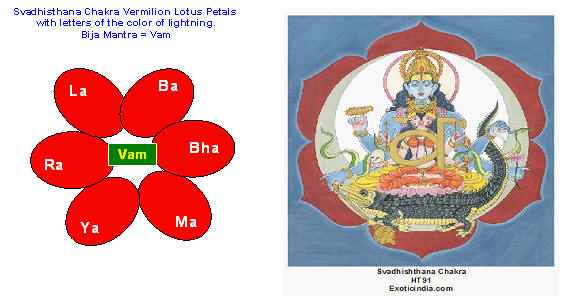
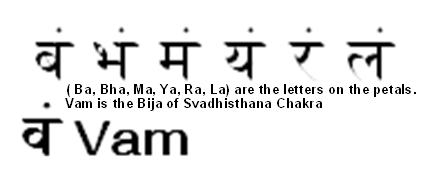
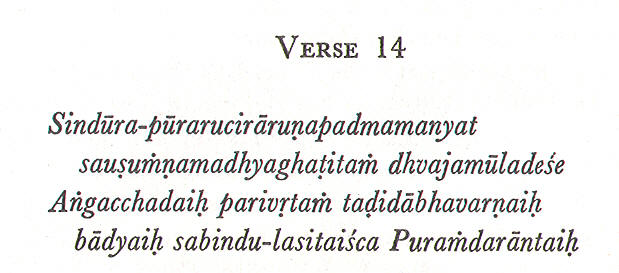
(Svadhisthana)
Sindūra-pūrarucirāruņapadmamanyat
sauṣuṁņamadhyaghaṭitaṁ dhvajamūladeśe
Aṅgacchadaiḥ parivṛtaṁ taḍidābhavarņaiḥ
bādyaiḥ sabindu-lasitaiśca Puraṁdarāntaiḥ
There is another Lotus1 placed inside the Susumna at the root of the genitals, of a beautiful vermilion colour. On its six petals are the letters from Ba to Puramdara2, with the Bindu3 superposed, of the shining colour of lightening.
another Lotus1 = Svadhisthana Chakra. Puramdara2 = the letter La. Bindu3 = The AnusvAra.
Svadhisthana: The place of Sva, meaning Para-Linga, or Supreme Linga. This is the seat of Supreme Linga.
Five verses from 14 to 18 describes Svadhisthana Chakra of vermilion color.
Sindūra-pūra-rucirā-ruņa = Of a beautiful vermilion color. sauṣuṁņa-madhya-ghaṭitaṁ = Placed inside the Susumna. Svadhisthana Chakra is within Susumna NAdi. dhvaja-mūladeśe = At the root of the genitals. Aṅga-chadaiḥ = On its six petals. bādyaiḥ sabindu-lasitaiśca Puraṁdarāntaiḥ = The letter La, being the Bija of Puramdara or Indra. The lustrous letters Ba, Bha, Ma, Ya, Ra, La are the six letters, one placed on each of the six Lotus petals.
Susumna = means that Susumna Nadi has three tubes one within the other. The central Nadi or channel is Brahma Nadi, within which is the Svadhisthana Lotus.
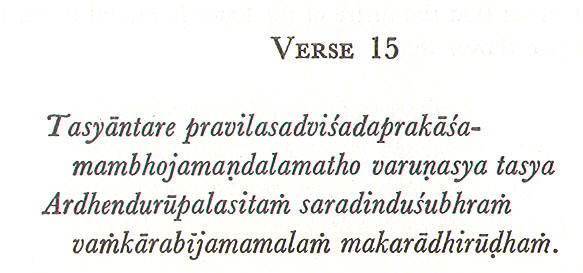
(Svadhisthana)
Tasyāntre pravilasadviśadaprakāśa-
mambhojamaņdalamatho varuņasya tasya
Ardhendurūpalasitaṁ saradinduśubhraṁ
vaṁkārabijamamalaṁ makarādhirūḍhaṁ.
Within it1 is the white, shining, watery region of Varuna, of the shape of a half-moon2, and therein, seated on a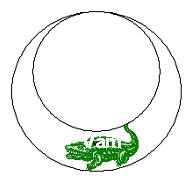 Makara3, is the Bija Vam, stainless and white as the autumnal moon.
Makara3, is the Bija Vam, stainless and white as the autumnal moon.
Within it1 = Within Svadhisthana Lotus Chakra. half-moon2 = Half-moon is the sign of Svadhisthana Chakra and water is the element of this chakra. Makara3 = A legendary animal as seen on the plate.
ambhojamaņdalam = The pericarp of the Svadhisthana Lotus Chakra contains the watery region (Ambhoja Mandalam) of Varuna. Ardhendurūpalasitaṁ = half-moon form shining. viśadaprakāśam = luminously white.
Varuna Bija is white and sits on Makara, the carrier of noose-holding Varuna. Above Varuna is four-armed and blue-colored Hari (Vishnu), worthy of worship. The letter Va in Vruna-Bija belongs to the semivowel group, Ya, Ra, La, Va
Why limited text
ReplyDeleteThnk u for this
V well explained
ReplyDeleteThanks for the great explanation.
ReplyDeleteOrlando convention massage